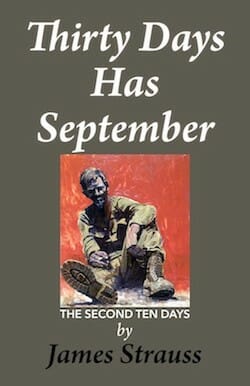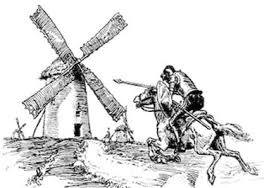From The Wilderness
INTO THE DARKNESS
The Pandemic came and went, and of course, has lingered a bit over time. It brought with it a response that caused a severe cloud to be dropped over all of social behavior, at least in the developed ‘first world’ countries like the United States. The secondary effect, minor in comparison, but still to be dealt with is in the area of the presentation of movies and video products provided on television and computer monitors of all sorts today. What’s happened is totally related to the massive increase in the amount of television watching and Internet usage that blossomed as so much of the public was ‘sheltered in place,’ and even when allowed out still returned to indoor locations many times more than before the Pandemic hit and was reacted to.
It’s not your television, nor your computer, desk laptop, or even main frame. Movies and video presentations are darker. It’s not you, either. What has happened is that the producers of theater, as I will term it for such video and television productions, reacted to something new. The audiences were trapped but needed more original material. More original material, whether delivered through the network, cable channels, or over the Internet, comes with costs. The more original material the more it costs producers to pay movie actors, lighting experts, sound engineers, set builders, and even makeup and costume personnel.
The producers came up with a solution, once flooding the air with reruns and old movies reached a saturation point. The producers responded to the public’s need by cutting costs. Every area mentioned above was cut back. Movies are darker by design, not entirely because lower lighting is cheaper to produce, but because all those other areas mentioned can be cheapened. Dark sets require much less detail.
Darker sets require much less in the areas of makeup and costume. Darker sets also make movie stars less visible. Watching many movies made over the past few years following the pandemic is almost like listening to the radio while having eyes glued to a nearly black screen. Hope springs eternal, however, so the audiences are glued to waiting for something visible to appear that supports the verbal presentations. Another factor that made all this rather awful stuff happen occurred because the producers were able to gauge the results of the public’s need for entertainment. Restaurants, movie houses, skating rinks, bars, and on and on were closed or severely cut back in hours.
Not so the Internet or television presentations. Streaming had already been invented and was growing in popularity. Today, only a few short years later, streaming has pulled up almost even in earning revenue to all the cable channels put together and certainly more than the networks. The producers have also correctly gauged not only the public’s loyalty in putting up with the darker features (although many don’t have a clue that it’s all on purpose) but also in accepting how these streaming operations have dissected the movie and sports broadcast business and created new nearly ‘thieving’ results. At one time broadcast television was free. Cable came along and began charging cable installation, and equipment rental charges to arrive at a monthly fee. Recently, the cable companies have broken apart into separate movie and video operations by purchasing the rights to theater presentations. To get to view those presentations (now, nearly all sources are sheltered within those operations) the public must join them, paying monthly on top of the cable fees.
Next, the cable companies through these subsidiaries started charging extra for the newer and better materials. That’s the third charge all packed together. Finally, or at least finally for a while, these operations have now thrown in advertising during these triply paid-for shows. Will the public figure all of this out and revolt or react in any way? Will the public figure out that it’s not them or their television or computer that’s creating this spreading darkness?
No adjustments on either television sets or computer screens are going to make the movies lighter, not by more than about five percent, which is nothing. The Pandemic’s effects continue to live on to hurt and irritate us all into the future.
















1968 was significant for several reasons:
1. **Political Turmoil**: It was a year of significant political unrest and upheaval around the world. Major events included the Vietnam War protests in the United States, student-led protests in France (May 1968), and the Prague Spring in Czechoslovakia.
2. **Civil Rights Movement**: In the United States, the Civil Rights Movement was at its peak. The assassination of Martin Luther King Jr. on April 4, 1968, sparked riots in many cities across the country.
3. **Global Unrest**: Beyond the U.S. and Europe, there were significant events in other parts of the world, such as the Tlatelolco massacre in Mexico City during the Olympics, which highlighted government repression.
4. **Cultural Shifts**: 1968 was also a year of cultural shifts, with the emergence of countercultural movements, such as the hippie movement, and the rise of new forms of music and art that challenged traditional norms.
5. **Space Exploration**: It was also a significant year for space exploration, with the Apollo 8 mission becoming the first manned spacecraft to orbit the Moon, paving the way for future lunar missions.
Overall, 1968 marked a tumultuous period of change and unrest across various aspects of society globally.
Wow, Riahard, now that’s some interesting stuff. You amaze me with your well written
analysis and conclusions…at least motivated bye my own work if not representing it.
Semper fi, my friend,
Jim